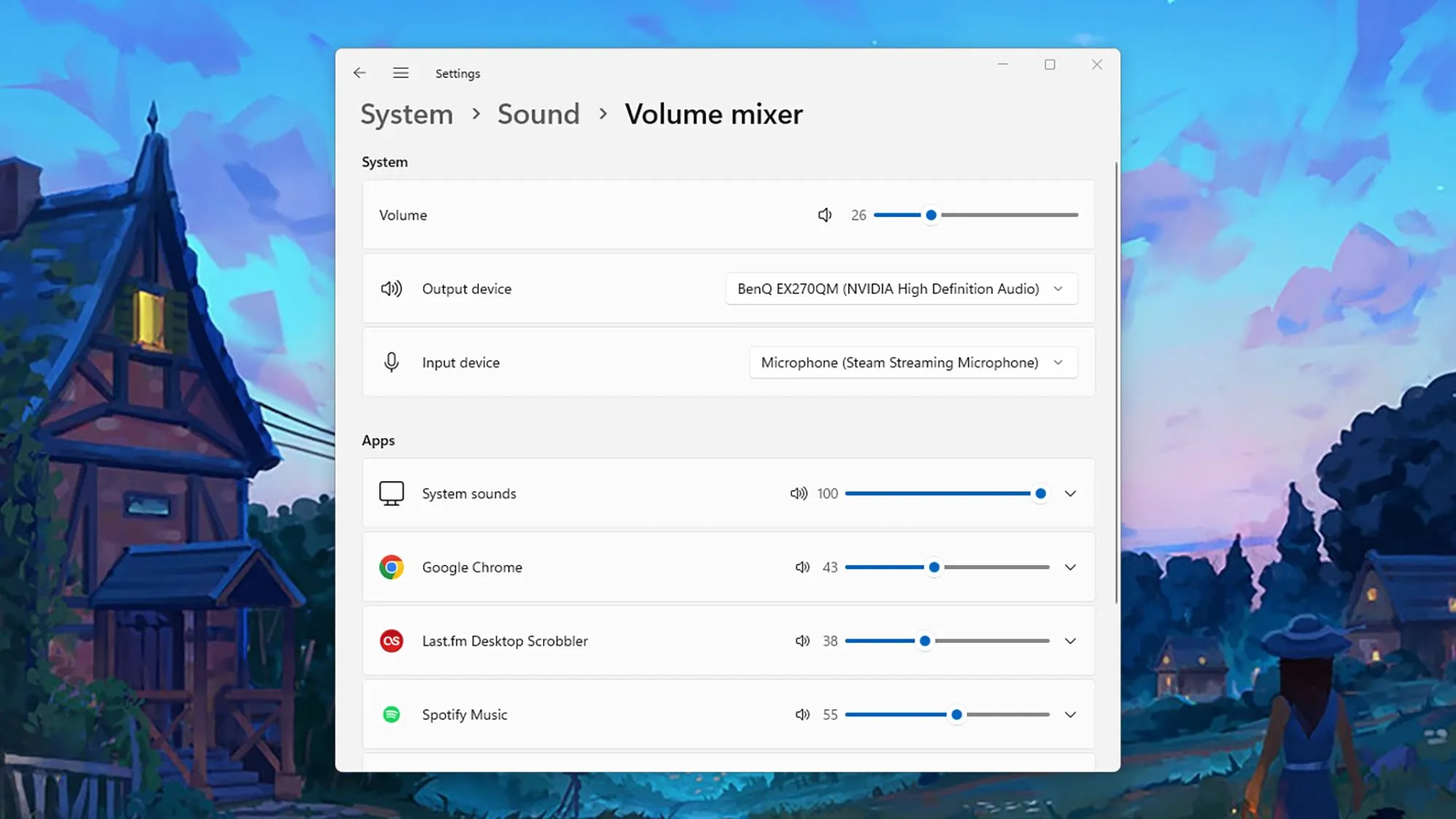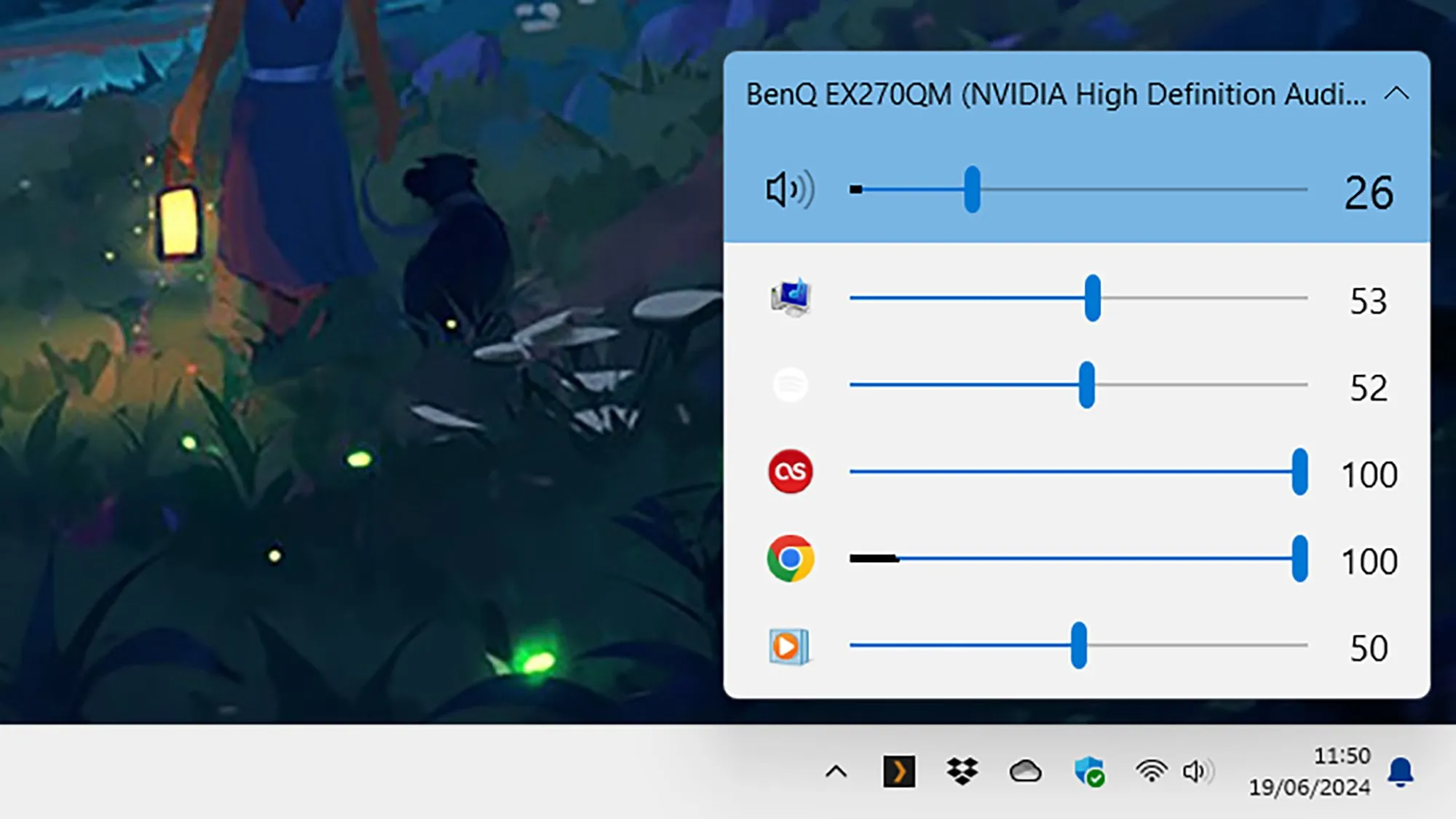How to Control the Volume of Individual Apps on Windows A Comprehensive Guide
Are you tired of constantly adjusting your computer’s volume when switching between different apps? Do you wish there was a way to control the volume of each individual app separately? Well, look no further because we have the solution for you! In this article, we will be discussing how to control the volume of individual apps on Windows. With these tips and tricks, you can easily adjust the volume of each app without affecting the overall system volume. So, let’s dive in!

1. Understanding App Volume and Device Preferences
Before we get into the specifics of controlling app volumes, it’s important to understand the concept of App Volume and Device Preferences (AVDP). AVDP is a feature introduced in Windows 10 that allows users to control the volume of individual apps and devices. With this feature, you can set different volumes for each app and device, such as speakers or headphones.
What is App Volume and Device Preferences?
App Volume and Device Preferences is a feature introduced in Windows 10 version 1803 that allows users to set different volumes for individual apps and devices. This means that you can now have one app at full volume while another app is muted, all without affecting the overall system volume.
How to access App Volume and Device Preferences?
To access App Volume and Device Preferences, follow these steps:
- Right-click on the volume icon on your taskbar.
- Select “Open Volume Mixer.”
- Click on the arrow next to the volume slider to expand the list of apps.
- Adjust the volume for each app according to your preference.
You can also access App Volume and Device Preferences through the Settings app:
- Go to Settings > System > Sound.
- Scroll down and click on “App volume and device preferences.”
Now that you know how to access AVDP, let’s discuss different ways to control the volume of individual apps on Windows.
2. Using Volume Mixer
The easiest and most convenient way to control the volume of individual apps is through the Volume Mixer. As mentioned before, you can access it by right-clicking on the volume icon on your taskbar and selecting “Open Volume Mixer.” This will open a window with a list of all the currently running apps. Here, you can adjust the volume for each app separately by moving the corresponding slider.
Advantages of using Volume Mixer
Using Volume Mixer has several advantages:
- It is easily accessible from the taskbar.
- You can quickly adjust the volume of individual apps without affecting the overall system volume.
- It provides a visual representation of the current volume level for each app.
Limitations of using Volume Mixer
While Volume Mixer is a useful tool, it does have some limitations:
- It only works for apps that are currently running. If an app is not in use, it will not appear in the Volume Mixer.
- Volume Mixer is only available in Windows 10. If you are using an older version of Windows, you won’t be able to use this feature.
- It doesn’t allow you to set a specific volume level for an app. You can only adjust the volume using the slider, which may not be precise enough for some users.
3. Using Third-Party Apps
If you’re looking for more advanced features to control the volume of individual apps, you can try using third-party apps. These apps offer more customization options and can be used in conjunction with Volume Mixer to enhance your audio experience.
EarTrumpet
EarTrumpet is a popular third-party app that allows you to control the volume of individual apps in a more precise manner. It offers a user-friendly interface and additional features such as keyboard shortcuts and custom hotkeys for quick access to app volumes.
How to use EarTrumpet?
To use EarTrumpet, follow these steps:
- Download and install EarTrumpet from the Microsoft Store.
- Right-click on the volume icon on your taskbar and select “Open Volume Mixer.”
- Click on the arrow next to the volume slider to expand the list of apps.
- Right-click on an app and select “EarTrumpet.”
- A pop-up window will appear, allowing you to adjust the volume for that specific app.
VB-Audio VoiceMeeter
VB-Audio VoiceMeeter is another popular third-party app that allows you to control the volume of individual apps. It offers advanced features such as virtual audio cables, which allows you to route audio from one app to another.
How to use VB-Audio VoiceMeeter?
To use VB-Audio VoiceMeeter, follow these steps:
- Download and install VB-Audio VoiceMeeter from the official website.
- Launch the app and go to the “Hardware Input” tab.
- Select the input device you want to use for your audio.
- Go to the “Virtual Inputs” section and click on “Add New Virtual Input.”
- Name the virtual input and click on “Set.”
- Now, go to the “A1” section and select the output device you want.
- In the “Master Section,” click on “A1” and select your virtual input.
- Finally, adjust the volume for each app by moving the corresponding fader in the “Applications” section.
4. Using Keyboard Shortcuts

If you’re looking for a quick way to control the volume of individual apps, you can use keyboard shortcuts. This method is especially useful if you frequently switch between different apps and don’t want to constantly open the Volume Mixer.
Using Third-Party Apps
Some third-party apps, such as EarTrumpet, offer custom hotkeys that allow you to adjust the volume for individual apps using your keyboard. These hotkeys are customizable, so you can set them according to your preference.
Using Built-in Shortcuts
Windows also offers some built-in shortcuts that can help you control app volumes quickly:
- To mute an app, press Ctrl + Shift + M.
- To decrease the volume for an app, press Ctrl + Shift + Down Arrow.
- To increase the volume for an app, press Ctrl + Shift + Up Arrow.
5. Using Command Prompt or PowerShell
If you’re a power user and prefer using command-line tools, you can control the volume of individual apps using Command Prompt or PowerShell. This method allows you to set a specific volume level for an app, which cannot be done using the Volume Mixer.
How to use Command Prompt or PowerShell?
To use Command Prompt or PowerShell, follow these steps:
- Open Command Prompt or PowerShell as an administrator.
- Type in
Get-Process
and press Enter. This will show a list of all the currently running processes.
- Find the name of the app you want to adjust the volume for and note down its process ID (PID).
- Now, type in
Set-AudioDevice -Name “AppName” -Volume X
, where “AppName” is the name of the app and X is the desired volume level.
- Press Enter and the volume for that app will be set accordingly.
6. Adjusting App Volumes with Registry Editor

Another way to control the volume of individual apps is by making changes in the Registry Editor. This method is not recommended for beginners as it involves tweaking system files, which can cause issues if not done correctly. However, if you’re comfortable with editing the registry, this method offers more customization options.
How to adjust app volumes in Registry Editor?
To adjust app volumes in Registry Editor, follow these steps:
- Open the Registry Editor by pressing Windows + R and typing
regedit
.
- Navigate to
HKEY_CURRENT_USER\SOFTWARE\Microsoft\Windows NT\CurrentVersion\AppCompatFlags\Layers
.
- Right-click on an empty space and select “New” > “String Value.”
- Name the new string as
C:\Path\To\App.exe
.
- Double-click on the new string and set its value data to
~ HIGHDPIAWARE
.
- Click on “OK” and close the Registry Editor.
- Now, open the Volume Mixer and you will see a new slider for that specific app.
- You can now adjust the volume for that app without affecting the overall system volume.
Conclusion
Controlling the volume of individual apps on Windows is a useful feature that can greatly enhance your audio experience. Whether you prefer using the built-in tools or third-party apps, there are various ways to adjust app volumes according to your preference. We hope this article has provided you with a comprehensive guide on how to control the volume of individual apps on Windows. So, go ahead and try out these methods and find the one that works best for you!